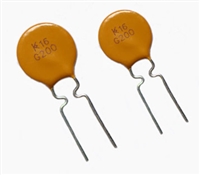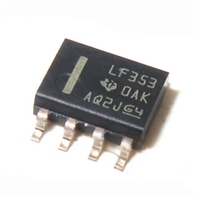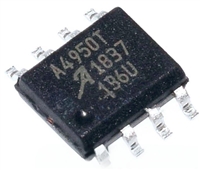SL1935
Quadrature DownconverterSection - continued
The oscillators share a common varactor line drive and
both require an external varactor tuned resonator
optimised for low phase noise performance. The
recommended application circuit for the local oscillators
is detailed in Fig.9 and the typical phase noise
performance is detailed in Fig.10. The local oscillator
frequency is coupled internally to the PLL frequency
synthesiser programmable divider input.
The output of the phase detector feeds a charge pump
and a loop amplifier. When used with an external loop
filterandahighvoltage transistoritintegrates thecurrent
pulses into the varactor line voltage used to control the
selected oscillator.
The programmable divider output Fpd divided by two
and the reference divider output Fcomp are switched to
port P0 by programming the device into test mode. Test
modes are detailed in Table 4.
The mixer outputs are coupled to the baseband buffer
amplifiers, providing for one of two selectable baseband
outputs in each channel. The required output is selected
The crystal reference frequency can be switched to the
BUFREF output by bit RE as detailed in Table 7.
2
by bit BS in the I C bus transmission (Table 6). These
outputs are fed off chip via ports ‘OPIA’ and ‘OPIB’
(‘OPQA’ and ‘OPQB’), then back on chip through ports
‘IPIA’ and ‘IPIB’ (‘IPQA’ and ‘IPQB’), allowing for the
insertion of two independent user definable filter
bandwidths. Each output provides a low impedance
drive(Fig.11) andeachinputprovides ahighimpedance
load . An example filter for 30MS/s is detailed in Fig.13.
Both path gains are nominally equal. NB 6dB insertion
loss is assumed in each channel, however a different pot
down ratio may be applied.
Programming
2
The SL1935 is controlled by an I C data bus and is
compatible with both standard and fast mode formats.
Data and Clock are fed on the SDA and SCL lines
2
respectively as defined by the I C bus format. The
device can either accept data (write mode) or send data
(readmode). TheLSBoftheaddressbyte (R/W)setsthe
device into write mode if it is low and read mode if it is
high. Tables 9a and 9b detail the format of the data. The
SL1935 may be programmed to respond to several
addresses and enables the use of more than one device
Each baseband path is then multiplexed to the final
baseband amplifier stage, providing further gain and a
low impedance output drive. The nominal output load
test condition is detailed in Fig.14.
2
in an I C bus system. Table 9c details the how the
address is selected by applying a voltage to the ‘ADD’
input. When the device receives a valid address byte, it
pulls the SDA line low during the acknowledge period
and during following acknowledge periods after further
data bytes are received. When the device is
programmed into read mode, the controller accepting
the data must pull the SDA line low during all status byte
acknowledge periods to read another status byte. If the
controller fails to pull the SDA line low during this period,
the device generates an internal‘STOP’ condition which
inhibits further reading.
PLL Frequency Synthesiser Section
The PLL frequency synthesiser section contains all the
elements necessary, with the exception of a reference
frequency source and a loop filter to control the selected
oscillator to produce a complete PLL frequency
synthesised source. The device, produced using high
speed logic, allows for operation with a high comparison
frequency and enables the generation of a loop with
excellent phase noise performance.
Write mode
14
0
TheLOsignalfromtheselectedoscillatordrivesfromthe
phasesplitterintoaninternalpreamplifier, providinggain
andreverse isolationfromthedividersignals. Theoutput
of the preamplifier interfaces directly with the 15-bit fully
programmable divider. The programmable divider has
MN+Aarchitecture, thedualmodulusprescaleris16/17,
the A counter is 4-bits and the M counter is 11-bits.
Bytes2and3containfrequencyinformationbits2 to2
inclusive (Table 9). Byte 4 controls the synthesiser
reference divider ratio (Table 3) and the charge pump
setting (Table 5). Byte 5 controls test modes (Table 4),
baseband filter path select BS (Table 6), local oscillator
select VS (Table 8), buffered crystal reference output
select RE (Table 7) and the output port P0.
After reception and acknowledgment of a correct
address (byte 1), the first bit of the following byte
determines whether the byte is interpreted as byte 2 or
4, alogic‘0’ indicatesbyte 2andalogic‘1’indicatesbyte
4. Having interpreted this byte as either byte 2 or 4, the
following byte will be interpreted as byte 3 or 5
respectively. After receiving two complete data bytes,
additional data bytes may be entered and byte
interpretation follows the same procedure without re-
addressing the device. The procedure continues until a
The output of the programmable divider is fed to the
phase comparator and compared in both phase and
frequency domains to the comparison frequency. This
frequency is derived from either the on board crystal
controlledoscillatororfromanexternalreferencesource.
In both cases the reference frequency is divided down to
the comparison frequency by the reference divider,
programmable into 1 of 29 ratios and detailed in Table 3.
The typical application for the crystal oscillator is shown
in Fig.15.
condition is received.
‘STOP’
4






 NTC热敏电阻与PTC热敏电阻的应用原理及应用范围
NTC热敏电阻与PTC热敏电阻的应用原理及应用范围

 GTO与普通晶闸管相比为什么可以自关断?为什么普通晶闸管不能呢?从GTO原理、应用范围带你了解原因及推荐型号
GTO与普通晶闸管相比为什么可以自关断?为什么普通晶闸管不能呢?从GTO原理、应用范围带你了解原因及推荐型号

 LF353数据手册解读:特性、应用、封装、引脚说明、电气参数及替换型号推荐
LF353数据手册解读:特性、应用、封装、引脚说明、电气参数及替换型号推荐

 A4950资料手册解读:特性、应用、封装、引脚功能、电气参数及代换型号
A4950资料手册解读:特性、应用、封装、引脚功能、电气参数及代换型号
